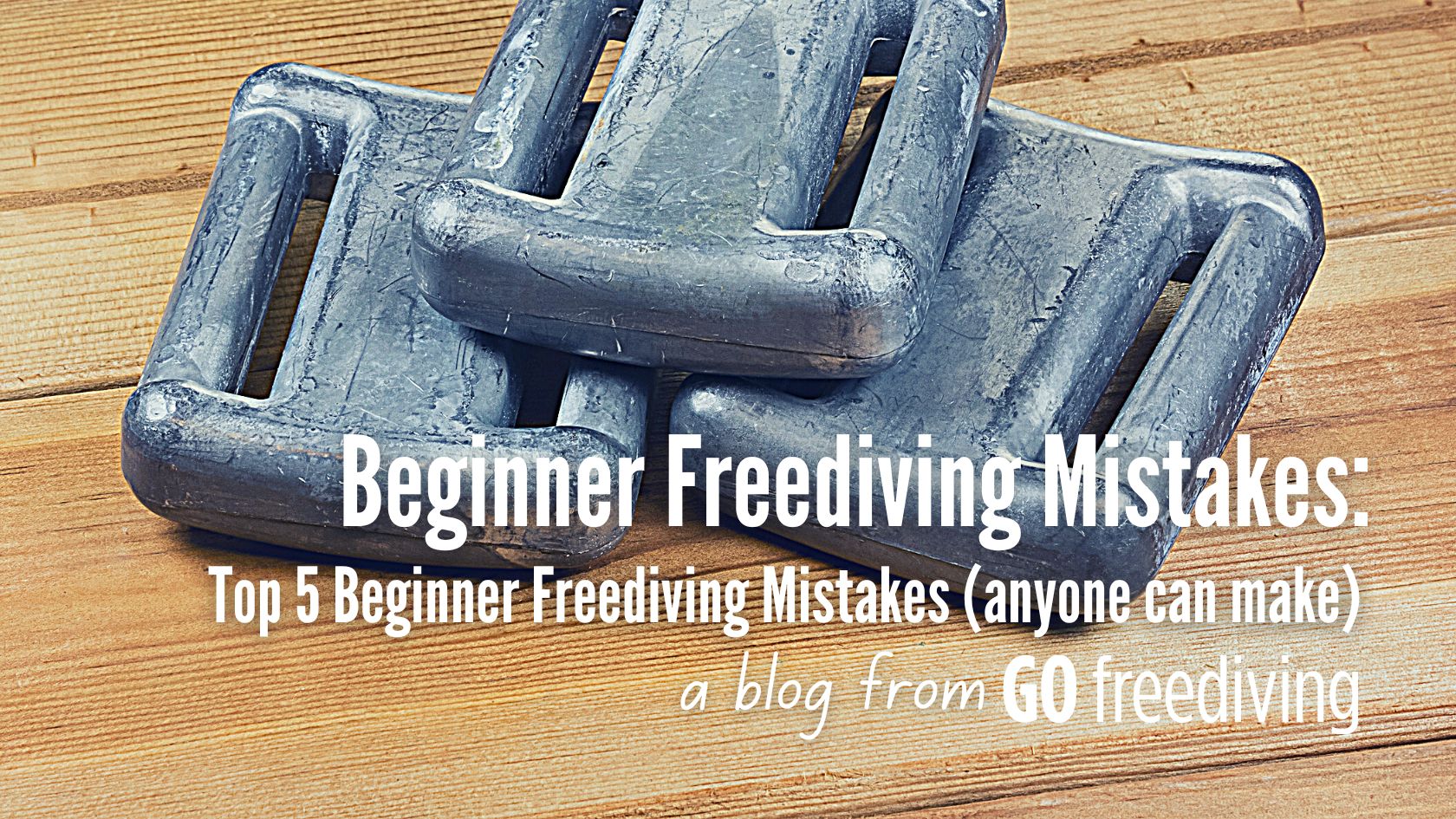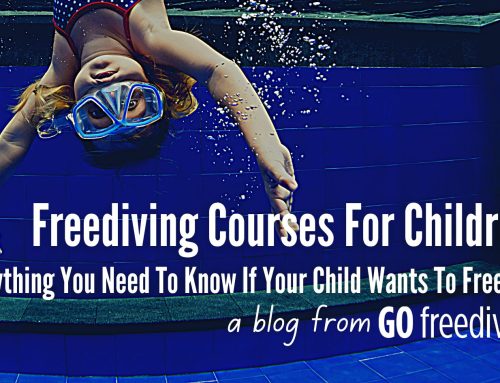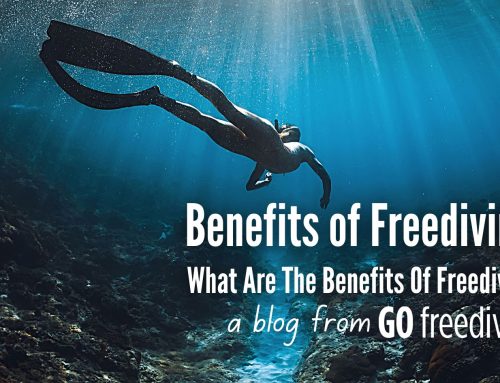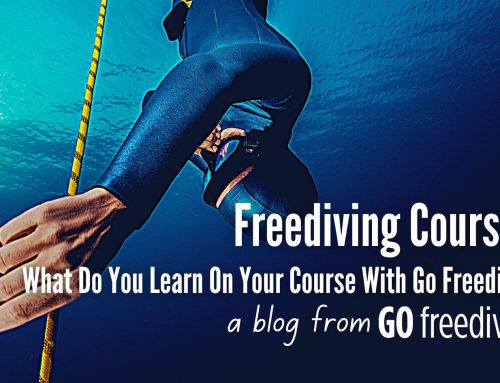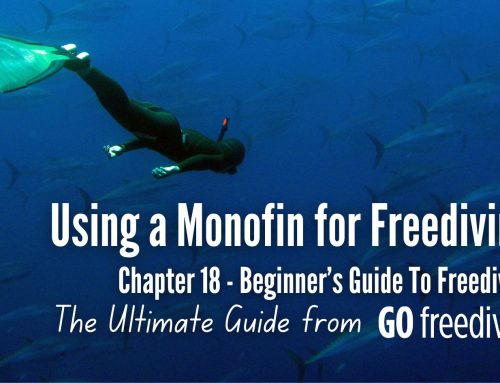When I learnt to freedive I thought I knew a little about the sport, but looking back, I realise now I knew nothing. I didn’t have a SCUBA background so didn’t know about depth and pressure, I only knew about equalisation from sucking on boiled sweets given on an airplane as it made its descent, and I presumed I needed to somehow grow my lungs in order to be a better freediver. This situation of supreme and blissful ignorance was compounded by the fact that when I learnt to freedive, back in the time of the aquatic ape hypothesis, there were no proper courses. I just jumped into the (30m) deep end, took a big breath and hoped for the best. However, I was different to most beginner freedivers, I didn’t make five beginner freediving mistakes. Oh no, my mistakes were in double figures…
So, the purpose of this blog is to list the top five beginner freediving mistakes anyone can make, why they make them, and how to avoid them. Knowing this is unlikely to make your freediving perfect first time out, but you should be able to recognise what’s going wrong sooner and then correct it.
One very important point that needs stressing before we go any further is that anyone new to freediving MUST take a recognised freediving course, preferably at least two days in duration, from a freediving agency such as RAID, AIDA or SSI. And after taking the course, must always freedive with a qualified buddy. Obvious disclaimers aside, let’s dive into (in no particular order) my top 5 mistakes beginner freedivers are likely to make.
#1 – Wearing too much weight
So, let’s start with one of the classic beginner freediver mistakes – which starts before you’ve even got in the water – the mistake of wearing too much weight. Beginner freedivers often put too much weight on their belts because they feel they need extra help to get below the surface. The reason they need extra help is that their duck dive is non existent or appalling, and if they do manage to get themselves under the surface after a lot of thrashing about and accidentally on purpose pulling on the line, their finning is so ineffective, they bob straight back up. The simple solution they employ to get over lack of technique is to wear more weight.
I still take great delight in teaching spearfishers because of the moment I take almost (and sometimes) all of the weight off their belts and tell them they are now at a safe and appropriate buoyancy. The look of abject horror on their faces, followed by the inevitable whining when they can no longer duck dive fills me undisguised glee as I then proceed to whip them into shape. They are used to simply pointing their heads towards the bottom and then starting to sink due to the amount of weight they are wearing. Now they have to use technique.
As far as beginner freediving mistakes go, you might be asking what is wrong with wearing more weight? The answer is simple: It’s just not safe. You should never have to fin on the surface to remain afloat, and unless you are recreationally freediving on a very shallow reef, you should always weight yourself to be positively buoyant in the top ten metres. This is the biggest risk area for shallow water black out and so you want to help your buddy rescue you by being positively buoyant in the unlikely event you have a black out. In addition, if you do black out and exhale air from your lungs then you have just made yourself even more negatively buoyant.
Take a look at this frightening video of a spearfisher blacking out and immediately sinking. He’s not wearing a wetsuit and is wearing a weight belt. It’s impossible to tell if the belt has any weight on it, but it’s clear that the moment he lets out his air and blacks out, he sinks quickly. If his buddy didn’t rescue him then he wouldn’t be around today.
As a beginner freediver, you’re not expected to pop down to ten metres and check your point of neutral buoyancy, so we do a test at the surface to give a safe approximation. You keep the body vertical in the water, head up, feet down, with the legs together and not moving, and the arms by the sides of the body. You exhale everything, and if the water level goes past your nostrils then you need to take some weight off. If you’re still bobbing about with the water around your chin then you need to put some weight on.
The advantage of learning correct duck diving and finning technique to overcome positive buoyancy is that it will make your diving safer and more enjoyable, and as for spearfishers? The feedback we’ve had is that learning proper freediving skills means they catch more fish…
#2 – Hyperventilating
So you’re a beginner freediver in the water, and about to hold your breath and do your first dive. What’s going through your head? Apart from blind panic, you’re probably thinking you need to cram as much oxygen into your body, whilst trying to relax as your heart rate goes through the roof. You might be lying there, thinking back to some snazzy videos you’ve seen online of freedivers ‘breathing up’. These usually featuring a particularly buff specimen showing off their diaphragmatic skills and often show hyperventilation (literally ‘over-breathing’), where the person is breathing in and out more than they need for what they are doing. This is a classic rookie mistake and one that needs to be completely avoided.
Our body likes to keep us in homeostasis. Sitting at my desk and typing this out, my oxygen saturation levels are between 97 and 99%. I’m not even thinking about my breathing, my body does that for me. But when I observe it, I can see that I’m breathing in and out a very small amount of air, known as tidal volume. It’s enough to keep me at nearly 100% saturation when my body is still. However, a beginner freediver often thinks that preparation breathing for a freedive should be an active process, one where they have to ‘do’ something. But if they’re lying on the surface and not moving, their breathing pattern should be just as small and gentle as mine, in fact more so as I’m using muscles to keep myself in a seated position.
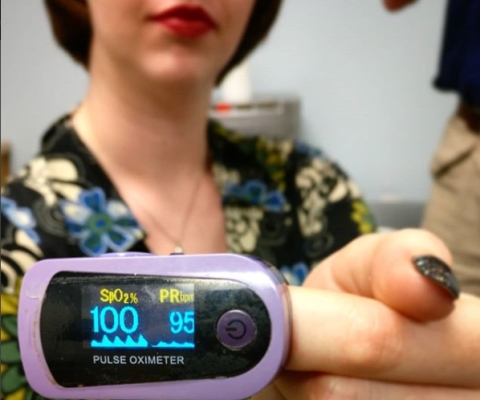
Student during oxygen saturation tests
In addition, when we start thinking about our breathing, our mind gets involved and usually buggers it up by getting us to breathe faster, or more air in and out. Even when we think we are breathing in a relaxed fashion it can be way too much. Twenty years ago I accidentally hyperventilated. I was about to do a personal best dive, the first time I had gone below 30 metres. I lay on the surface trying to make sure I relaxed as much as possible. I breathed a very long and slow breath completely in, and then completely out again. I used the full volume of my lungs to breathe in and out, and did this very slowly. However, after two minutes, I had hyperventilated so much that I had a carpopedal spasm – my fingers and thumbs curled in towards my palms and I couldn’t move them. I had been really trying to ‘relax’ my breathing, but I had still breathed in and out too much.
So in terms of beginner freediving mistakes what’s the big deal with hyperventilating? Where do I start… The biggest risk of hyperventilating/over-breathing is that it removes carbon dioxide from the blood. This gives our body its urge to breathe and so without it, our dives can feel easier and make us erroneously think we have more oxygen on board. But without an urge to breathe we can easily push our dives too far and risk a black out. Removing carbon dioxide from the blood also causes oxygen to bond more strongly to haemoglobin (the Bohr effect), which means we actually have LESS oxygen available to us. Hyperventilation also constricts the arteries supplying blood to the brain and increases our heart rate, increasing the speed we use up oxygen.
So if the above isn’t enough to give you pause for breath, then I don’t know what will… When you prepare for a breath hold it should be a passive, not an active process. Imagine you are falling asleep, your body completely relaxed. This is where a good instructor can really help to coach you if you’re not sure what you are doing. We’ve also got more blogs that go into depth on a number of these topics, but the big take home is – you should breathe as if you are falling asleep.
#3 – Not equalising properly or enough
When I watch a beginner freediver, I can see their head and body position. I can hear them breathing before the dive, I can observe their technique, and make a pretty accurate guess at their level of relaxation and what thoughts are going through their head. What I can’t see however, is what is going on inside their head mechanically as they attempt to equalise.
The biggest beginner freediver mistakes students have is not with breath hold, but with equalisation. They don’t manage to equalise completely, their might only equalise one ear, or, most commonly, they don’t equalise frequently enough. Once an equalisation has been missed, it becomes very difficult to ‘catch up’, and repeated late equalisation can bruise or perforate the eardrum or cause a middle ear baratrauma, where fluid comes into the middle ear to equalise the pressure.
I’ve written extensively about equalisation elsewhere which I’ve linked to below, but my top tip here is to pre-empt every equalisation. Equalise BEFORE you need to. Particularly in the first 10-15 metres, where the pressure changes are the quickest, equalise at least every metre and before you feel any pressure build up in your ears. If you do this, then you’ll stay on top of every equalisation and your ear drums will thank you for it.
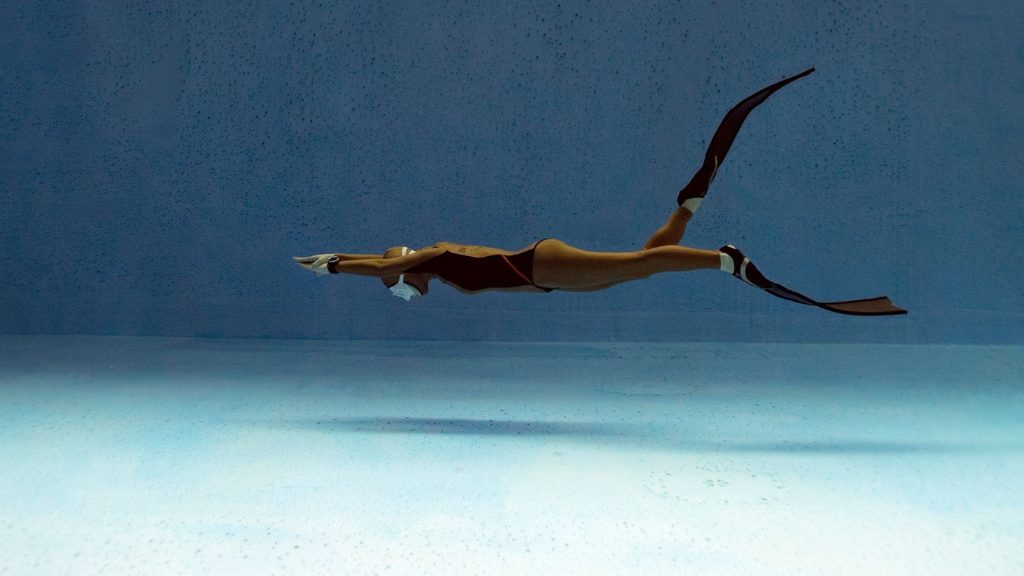
#4 – Looking where you are going
I get it. You’re underwater and you want to see where you are going and have a look around. But if you dive with chin lifted and your neck extended then you’ll make equalisation more difficult, spoil your streamlining and strain your neck muscles. In fact, in terms of equalising technique, I believe lifting the chin and looking down the line to be the biggest impediment to easy equalisation.
Most beginner freedivers have no idea they are doing this, and when they try to correct it, are still so desperate to see where they are going that they tuck their chin in, but then arch their back and banana their body so they can still see down the line. Looking down the line can also be psychologically disheartening, as your destination looks so much further away than you first thought.
On the ascent as well, looking up can cause panic in a freediver. They want to know the surface is close, so they look up, and suddenly it seems very very far away and so they panic, start finning when they should be stopping, and use up oxygen they could have conserved.
On the way down, a quick glance is okay, but try and look straight ahead at the rope. Closing your eyes completely is also a great way to focus the mind inwards on equalisation and how you are feeling. On the way up, focus on the eyes of your buddy, relax, and let positive buoyancy take you to the surface.
And if you’re recreationally freediving, just remember, if you keep your chin tucked in and body straight on the way down, you’ll get there quicker and with less oxygen use, and then you’ve got far longer to chill out and check out the underwater world.
#5 – No forward fin stroke
The biggest issue with wearing and using long freediving fins, is that suddenly you have to displace an awful lot of water with them. The movement backwards, as your leg moves from in front of your body to behind it, is fairly easy to master, however the movement forward as your leg comes in front of your body is much harder. As a result, the last of the most common beginner freediver mistakes makes is not having a strong enough forward fin stroke.
The effect of this is inefficient finning and your descent being at a steep angle, not vertical. If you are diving down a line and the line is pushing into your body or ends up behind you, then this is the issue you need to address.
A great way to practice this is on the surface with the body vertical, head out, legs down. Practice your finning vertically, trying to keep the legs straight, the fin stroke wide, and the forward fin stroke being equal to the back stroke. In fact, we usually advise to ONLY think about the forward fin stroke as the back one will usually take care of itself.
So that’s our top 5 beginner freedivers mistakes! If you’re like I was then there are plenty more mistakes you’re likely to make. Here’s a short list of some other mistakes you might find yourself overcoming:
Wearing the wrong kit – an ill-fitting suit, high volume mask, nylon weight belt around your stomach, and scuba fins can make your whole dive ineffective and unpleasant.
Poor recovery breathing – in extreme cases this can be the difference between a clean dive and a black out. Recovery breathing is counter-intuitive and needs to be practiced repeatedly by everyone, no matter how good a freediver you think you are.
Stress – stress leads to a higher consumption of oxygen, poor technique and your dive feeling rubbish rather than relaxing.
Inexperience – always view every dive session as a chance to learn and improve. The moment you think you know it all, is the moment the unexpected and dangerous can happen.
The good news is, whatever beginner freediver mistakes you might make, with the proper instruction, it’s easy to overcome them. And no matter what crazy thing you end up doing, rest assured there’s a student I’ve taught that has done something even more bonkers. However, to save their blushes, I won’t mention their names….
Learn to freedive with Go Freediving
Go Freediving is the longest established, most experienced and friendliest freediving course provider in the UK, led by world class freediving instructor trainer Emma Farrell, and her team of personally trained instructors. No other course provider has such a good instructor to student ratio, safety record and personal touch.
Whether you’re a beginner dipping your toes into the world of freediving, a seasoned pro looking to turn professional, or simply a freediver of any level who wants the best freediving holiday in the world, we’re here for you!
Also check out our online guide, The Beginners Guide to Freediving by clicking here!
Keep in touch with everything Freediving
Subscribe to our mailing list for weekly newsletters with exclusive articles, news, films, offers and more!
And check out You Tube!

